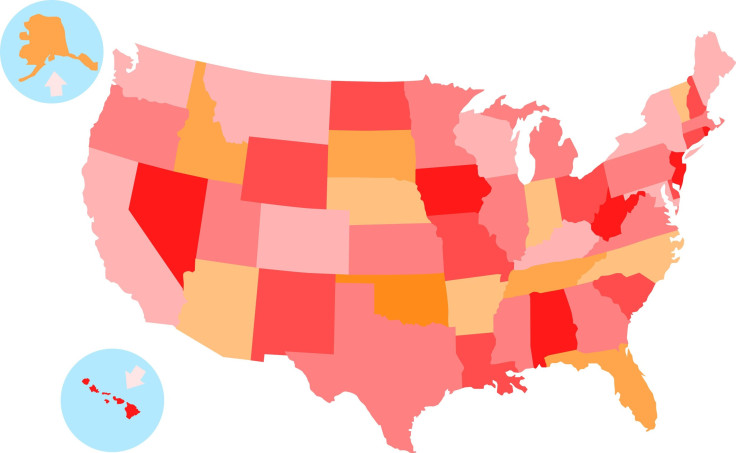Injury-Related Death Rate Highest Among Those 44 And Younger, And Drug Abuse Is One Of The Biggest Reasons

West Virginia is the state that has the highest rate of death from injuries in the U.S., which include injuries sustained in fires, car crashes, and drug overdoses, according to a new report titled "The Facts Hurt: A State-By-State Injury Prevention Policy Report," which was completed by the Trust for America’s Health.
Injuries are the leading cause of death for Americans aged 1 to 44, and are responsible for nearly 193,000 deaths per year. Overall, 17 states saw increases in injury-related deaths, 24 remained stable, and nine saw decreased rates. Other states that have high death rates from injuries include New Mexico (92.7 deaths per 100,000 people), Oklahoma (88.4 deaths per 100,000 people), and Montana (85.1 deaths per 100,000 people).
Drug overdoses have become the leading cause of injury in 36 states, including in California where they surpassed vehicle-related deaths. Across the nation, drug overdose deaths have more than doubled in the past 14 years, amounting to 44,000 deaths a year, with half of those deaths coming from prescription drugs.
Prescription drug monitoring programs are a key way to prevent injury-related deaths in these at-risk populations. The program employs a database that doctors can use to record and track patients’ prescriptions, and can help identify patients who travel to different doctors trying to get more prescriptions drugs, according to the report.
The report offers a number of options that will help prevent injuries and subsequent deaths, including implementing policies requiring sobriety checkpoints, seat belts, wearing bike helmets, and more comprehensive prescription drug monitoring programs.
Researchers analyzed these accidents and injuries, both intentional and unintentional, in all 50 states and the District of Columbia from 2011 to 2013. Nearly 193,000 people in the country died from injuries, which is roughly 50 deaths per 100,000 people yearly. By contrast, West Virginia had 98 deaths from injuries per 100,000 people.
“Injuries are not just acts of fate. Research shows they are pretty predictable and preventable,” said Jeffrey Levi, executive director of TFAH, in the report. “This report illustrates how evidence-based strategies can actually help prevent and reduce motor vehicle crashes, head injuries, fires, falls, homicides, suicides, assaults, sexual violence, child abuse, drug misuse, overdoses and more. It’s not rocket science, but it does require common sense and investment in good public health practice.”



























